Opinion
A tribute to Winitha (Winifred) Fernando

by Dr Laksiri Fernando
It is not so conventional for a husband to write an eulogy or memorial for his wife. However, we have not been very conventional in life on many matters and occasions. We were born in the same area of Moratuwa, more precisely Moratuwella, in between the Panadura river and the Indian Ocean. Therefore, the nature and water had some effect on our lives in a positive manner from the beginning. Only on rare occasions we had to be careful about the rising tide of the river or the angry behaviour of the sea. The area was fairly clean, and the residents were less than a quarter of the present population. Her house was along Francisco Place and ours was just beside St Peter’s Church.
It was after an initial stay in Ragala, where her father ran a petrol station, that she came with some of her siblings to stay at their ancestral home and to go to school in Moratuwa. While she studied at Princess of Wales College, I attended the Prince of Wales College. Her elder sister and one of my elder sisters were friends. This gave us the initial opportunity to become family friends. We also went to the same church and Sunday school at St Peter’s Church.
She had an initial adventurist nature to influence others through several devices. When I met her as a teenager, one of her tricks was to read or pretend to read others’ horoscopes. Perhaps she had learnt something from a Guru. I was bypassed, until I learned palm reading. Obviously, palm reading was more effective than horoscopes in conquering followers. That is how I managed to conquer her.
We had common endeavors in studying and preparing for examinations. That is how we came closer in early 1960s. We exchanged study notes, books, pens, pencils, and letters including love letters. Those days pens were not ball point but fountain pens. We sometimes got reprimanded by our families for these exchanges, but not necessarily for our friendship. In our family, Winitha was considered a good person and perhaps I also had the same reputation in her family. Among our topics of discussion, leftist politics started to take prominence given my close association with the Lanka Sama Samaja Party – even as a schoolboy.
We entered the University of Peradeniya, one after the other, I opting to do a special degree in Economics, and Winitha selecting B.Ed.. At Peradeniya, apart from our studies we were closely involved in radical left politics. Our objective was to keep the left movement as independent as possible from the main (bourgeoise) parties – although it was difficult to achieve. Those days, in the student movement, there was a fair balance between studies and student activism. However, things were changing during the latter stages of our student days.
In 1970, Winitha became a graduate teacher, first teaching at Kandapola and she was boarded at Nuwara Eliya. By that time, we were married. Our marriage was sudden and unconventional. My appointment at Vidyodaya University in June 1969 was an easy excuse for a sudden marriage. Under university rules, when a lecturer goes on overseas leave, the spouse received travel grants if they were married before the appointment. That was an excuse. We didn’t see any reason in having a conventional wedding or a grand ceremony, although our families were all ready for that.
This year, 2022, we completed 53 years of married life without any upheavals. Our only son, Ravi, born in 1973, was always on our side. His birth also marked a change in our lives, from being a less responsible couple to a more accountable parents. Politics became more of a theoretical or academic matter without our direct involvement.
We went to Canada in the mid 1970s to complete our postgraduate studies thanks to Prof A. J. Wilson’s help. Winitha completed a M.Ed. We became very close to Wilson family, Susili Wilson (S. J. V. Chelvanayakam’s daughter) as an inspirer. Through experience, we came to know the futility of Sinhala people suspecting or distancing themselves from Tamil people and vice versa, one of the causes of the ethnic conflict in Sri Lanka.
While more of her study courses centered around educational psychology, she selected “The Development of University Education in Sri Lanka, 1963 – 1971: Implications for Employment” as the research topic. She wrote “My main conclusion is that while it is to some extent clear that the expansion of university education during 1960s, with a greater emphasis on the humanities and social sciences, was largely responsible for aggravating the unemployment situation, there is, however, the more important consideration that a greater share of the blame for the situation has to be assigned to the tardy economic growth.”
Despite having obtained an MEd from the University of New Brunswick, she was not expecting any special treatment or promotion. She accompanied me to Geneva in 1984 until we decided to migrate to Australia for the sake of our son in 1991. She was also committed to the objectives of the World University Service (WUS) as I was.
She had completed a teaching career of over 15 years by then. Under new regulations, those teachers who had completed 12 years of teaching could obtain retirement and pension. However, she could not. When we applied for a pension, she was served with ‘a vacation of post notice.’ When an appeal was made, a person in charge of the matter said that we should go to the Minister. Although the Minister was personally known to both of us, Winitha refused to meet him as a matter of principle.
In Australia, she first served at the Community Services Centre in Bondi Junction. Then she obtained a casual teacher position in the Western Sydney area. Thus, we moved from East to West in Sydney. When a teacher was on leave or absent, she had to go and teach. No influence was necessary for these appointments. Although it was casual, considering her postgraduate qualifications from Canada, she was given a higher salary scale.
Teaching and teacher education appeared to make a big influence in a person’s personal character. She was calm and sober, balanced minded and moderate, and without jumping on to quick conclusions on any matter. After my retirement, our lives became much closer during the last ten years or so. We again started to exchange things like shirts and shoes, like in our young age. She was delighted to wear my shirts.
For the last three years, we have been staying at the Bruce Sharpe Lodge in Rockdale, Sydney. Australia which provides excellent services to old-aged people particularly with health issues. Her passing away was completely unexpected. She was admitted to hospital due to a brain aneurysm. Although a successful surgery was done, contracting Covid surprisingly in the ICU, prevented her further recovery. No health system appears to be faultless in any country today. Negligence or challenge of Covid was a major factor.
Winifred passed away peacefully without much suffering on 12 August. Our daughter-in-law Clare, our grandson Josh, our son Ravi, and I were by her side during her last moments. She passed away at 4:33 am on 12 August.
May she Rest in Peace.
May she attain Nibbana.
(This tribute was written with inputs from our son, Ravi Fernando.)
Opinion
Boxing day tsunami:Unforgettable experience
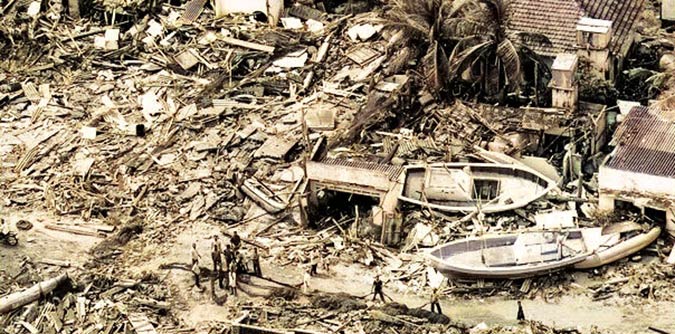
The first and only tsunami that Sri Lanka experienced was on Boxing Day(26th) of December 2004. My wife and I, as usual, went down to Modara in Moratuwa to purchase our seafood requirements of seafood from our familiar fishmonger, Siltin, from whom we had been buying fish for a long time. Sometimes we used to take a couple of friends of ours. But on this day, it was only both of us that went on this trip.
We made our purchases and were returning home and when we came up to the Dehiwala bridge, many people were looking down at the canal from both sides of the bridge. This was strange, as normally if there was something unusual, it would be on one side.
Anyway, we came home unaware of anything that had happened. A school friend of mine (sadly he is no longer with us) telephoned me and asked whether I was aware of what had happened. When I answered him in the negative, he told me to switch on the TV and watch. Then when I did so and saw what was happening, I was shocked. But still I did not know that we had just managed to escape being swept away by the tsunami.
Later, when I telephoned Siltin and asked him, he said that both of us had a narrow escape. Soon after we had left in our car, the tsunami had invaded the shore with a terrifying wave and taken away everything of the fishmongers, including their stalls, the fish, weighing scales and money. The fishmongers had managed to run to safety.
This had been about five minutes after we had left. So, it was a narrow shave to have escaped the wrath of the demining tsunami( the name many Sri Lankans came to know after it hit our island very badly}
HM NISSANKA WARAKAULLE
Opinion
Shocking jumbo deaths
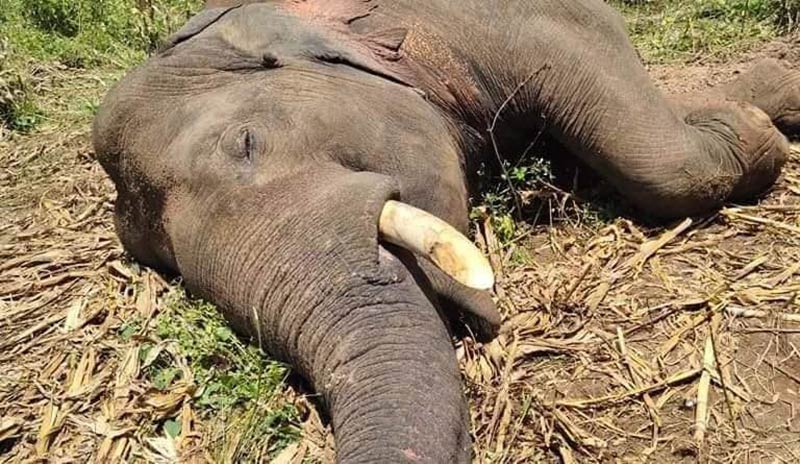
Sri Lanka has recorded a staggering 375 elephant deaths in the past eleven and a half months due to a multitude of causes, according to the Department of Wildlife Conservation. U. L Thaufeeq, Deputy Director – Elephant Conservation said the deaths include 74 from gunshots, 53 from electrocution, 49 from hakka patas (explosive devices hidden in food), seven from poisoning, 10 from train accidents, three from a road accident, and six by drowning. It makes such diabolical reading!
“The causes of other deaths are due to natural causes or causes that could not be identified. Most of the elephants that died were young,” the official said.
Meanwhile, the human-elephant conflict has also taken a toll on people, with 149 human deaths reported this year.
Accordingly, human-elephant conflict has resulted in 524 deaths of both elephants and humans in 2024.
In 2023, a total of 488 elephants and 184 people have died consequent to the conflict, according to Wildlife Department statistics.
The human-elephant conflict in Sri Lanka has escalated to unprecedented levels with reasons like habitat destruction, encroachment, and the lack of sustainable coexistence measures contributing to the issue.
This is an indictment of the Wildlife Department for just giving the sad yearly statistics of shocking losses of our National treasures !
Given the fact that Sri Lanka boasts of 29.9% of the country declared as protected forests, Sri Lanka is a haven for nature lovers. Boasting 26 national parks, 10 nature reserves including 3 strict nature reserves, and 61 sanctuaries, the national parks in Sri Lanka offer an incredible variety of wildlife experiences.
Taken in that context, the million dollar question is why on earth the Wildlife Department is not being proactive to capture these magnificent animals and transport them into protected sanctuaries, thus effectively minimising dangers to villagers ?
Being a Buddhist country primarily, to turn a blind eye to these avoidable tragic deaths to mankind and wild elephants, we should be ashamed !
As a practising Buddhist myself, I think our clergy could play a major part in calling upon the Wildlife Department to get their act together sooner rather than later to protect human elephant conflicts !
Sri Lanka being a favourite destination amongst foreign tourists, they are bound to take a dim view of what is happening on the ground!
If the top brass in the responsible department are not doing their job properly, may be there is a case for the new President to intervene before it gets worse!
All animal lovers hope and pray the New Year will usher in a well coordinated plan of action put in place to ensure the well being of wildlife and villagers !
Sunil Dharmabandhu
Wales, UK
Opinion
Laws and regulations pertaining to civil aviation in SL, CAASL
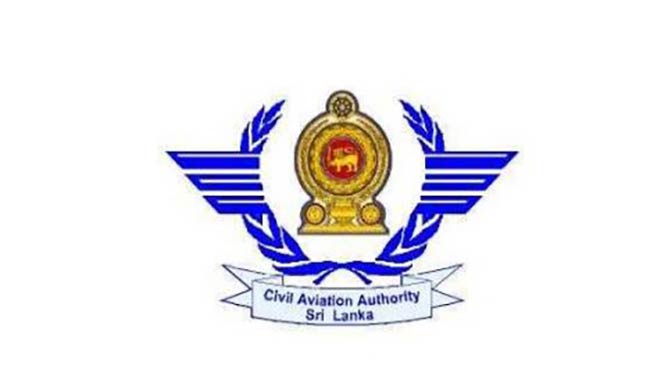
This has reference to the article from the Aircraft Owners and Operators Sri Lanka, titled ‘Closer look at regulatory oversight and its impact on Tourism’, published on Tuesday, 24th December 2024.To explain further, in the beginning there was the Air Navigation Act No 15 of 1950 which was followed by the Air Navigation Regulations (ANR) of 1955. This was long before the national airline had acquired pressurised aircraft, intercontinental jets, sophisticated navigation equipment, satellite communication and automatic landing systems, and ‘glass’ flight-deck instrumentation.
Today, civil aviation in Sri Lanka is governed by Civil Aviation Act Number 14 of 2010. Yet the Air Navigation Regulations (ANR) promulgated back in 1955 remain in force.
These outdated regulations still stipulate rules forbidding the carriage of passengers on the airplane’s wings or undercarriage (landing gear). In short, they are neither practical nor user-friendly. In contrast, the Air Navigation Regulations of other countries have progressed and are easy to read, understand, and implement.
To overcome the problem of outdated regulations, as an interim measure in 1969 the then Minister of Communications and Transport, Mr E.L.B. Hurulle issued a Government Gazette notification declaring that the Standard and Recommended Procedures (SARPs) in Annexes to the ICAO Convention signed by Ceylon in 1944 shall be made law.
Even so, nothing much was done to move with the times until updating of the Civil Aviation Act 14 of 2010, while the Air Navigation Regulations remained unchanged since 1955. However, these regulations were modified from time to time by the promulgation of Implementing Standards (IS) and General Directives (GDs) which were blindly ‘cut and pasted’ by the Civil Aviation Authority of Sri Lanka (CAASL), from the ICAO (International Civil Aviation Organisation) Annexe ‘SARPS’ without much thought given. To date there are literally 99 IS’s starting from 2010.
The currently effective air navigation regulations are not in one document like the rest of the world, but all over the place and difficult for the flying public to follow as they are not regularly updated. This sad situation seems to have been noticed by the current regime.
The National Tourism Policy of the ruling NPP states, “Domestic air operations are currently limited due to high cost and regulatory restrictions. The current regulatory and operational environment will be reviewed to ensure domestic air connectivity to major tourist destinations. The potential of operating a domestic air schedule with multiple operators is proposed. Additionally, domestic airports and water aerodromes in potential key areas will be further developed, for high-end tourism growth.”
“The tourism policy recognises Sri Lanka’s potential to develop Sri Lanka’s aviation-based specialised tourism products, including fun flying, hot air ballooning, paragliding, parachuting and skydiving, and scenic seaplane operations. To facilitate the growth of these niche markets, existing regulations will be reviewed with the aim of attracting capable investors to develop and operate these offerings.”
It remains to be seen whether the NPP government lives up to those promises.
Note:
That OPA report talks of two funds: ‘Connectivity’ and ‘Viability’ for a limited period like three or five years to help jump-start the domestic aviation industry.
The ‘Connectivity Fund’ will cap the seat price for local passengers to a more affordable value to destinations while the ‘Viability Fund’ will assume that all seats are occupied and compensate the operator for any unutilised seat. The intention is to popularise domestic aviation as a safe, quick and convenient mode of transport.
Capt. Gihan A Fernando
RCyAF/ SLAF, Air Ceylon, Air Lanka, Singapore Airlines and Sri Lankan Airlines.
Now A Fun Flier
-

 Sports6 days ago
Sports6 days agoPathirana set to sling his way into Kiwi hearts
-
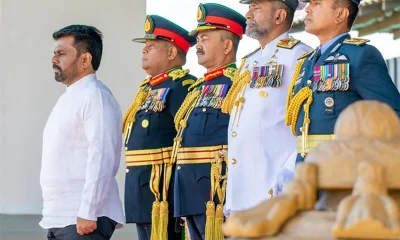
 News4 days ago
News4 days agoOffice of CDS likely to be scrapped; top defence changes on the cards
-
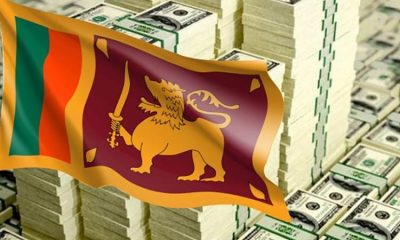
 News7 days ago
News7 days agoSL issues USD 10.4 bn macro-linked bonds
-
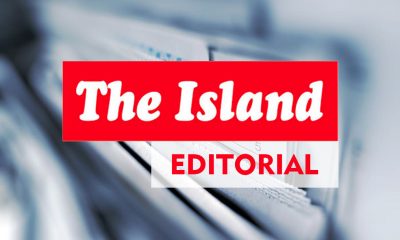
 Editorial7 days ago
Editorial7 days agoRanil’s advice
-

 Editorial6 days ago
Editorial6 days agoThe games they play
-

 Features4 days ago
Features4 days agoAn Absurd play in Parliament: Qualifications versus education
-
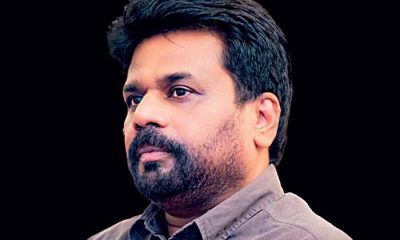
 Opinion5 days ago
Opinion5 days agoWhat AKD and NPP should bear in mind
-

 Midweek Review3 days ago
Midweek Review3 days agoEx-SLN seniors focus on seabed mining and Sri Lanka’s claim for the delimitation of the Outer Continental Margin











